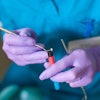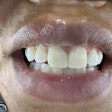The American Academy of Pediatric Dentistry (AAPD) today responded to a recent report in Pediatrics that questioned the value of preventive dental visits in reducing nonpreventive dental visits and costs.
According to Paul Casamassimo, DDS, MS, the director of the AAPD Pediatric Oral Health Research and Policy Center, it is important to put the authors' findings into context in recognition of the inherent limitations of this study.
Although the authors correctly indicate that children covered by Medicaid tend to be at higher risk for dental caries, the report does not recognize that these children may not have access to care or enjoy appropriate preventive services. The higher risk of dental caries, along with this lack of early preventive care, may result in the first visit being sought in response to existing decay that causes pain. Often, this necessitates restorative treatment at their first visit. In addition, children with higher risk of caries need an increased number of preventive services, so cost would likely be maximized. Finally, a body of literature speaks to the residual continued disease occurrence in children afflicted early in life with dental caries.
Inherent problems with extrapolating from Medicaid data include episodic care seeking, enrollment variations, no differentiation of levels of dental caries risk, lumping diagnostic and preventive services together, and the vast unknown of what is not reported or discernible from the data. Additionally, restorative expenditures, as compared with diagnostic and preventive costs, will be very high.
Consideration of costs must take into account prevention's effects on the reduction of emergency department visits for tooth pain and also the need for general anesthesia care to treat dental caries. Reports cited by the Pediatrics study authors include these "hidden costs," which can be sizable but are usually found in medical claims data, not dental data. Also, the Pediatrics study does not take into account costs such as emergency room visits and services that must be provided under general anesthesia.
Readers should also be aware of the hidden human costs of dental caries, which include the morbidities of chronic pain, impaired learning, lower self-esteem, and compromised nutrition.
"Unfortunately, current data collection limitations and the dearth of studies on these consequences of dental caries do not allow a full picture of what preventive services may be doing for children," said Warren Brill, DDS, AAPD president. "Our policies and guidelines encourage early preventive care not only to reduce cost, but also to improve the quality of life for children."



















